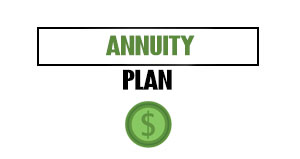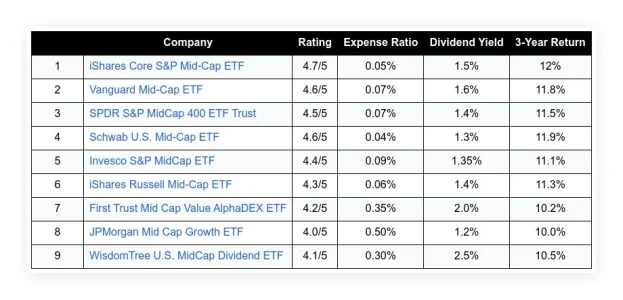During the fall, people prepare instinctively as the days get shorter and the air gets crisper. Before winter sets in, we rake the leaves and seal the windows. However, fall isn’t just about yardwork, cozy sweaters, and pumpkin lattes. Financially, this is also an excellent time to plan for retirement.
With a fall financial checkup, you can keep an eye on your finances, take a step back, and make smart adjustments before the New Year. If you go into the holidays knowing you’re on track for long-term success, rather than waiting until January, you’ll be more confident about your financial future. Put it this way: it’s preventive maintenance for your finances.
Using this post, you can close out the year with clarity and peace of mind by reviewing your retirement readiness.
Table of Contents
ToggleWhy Fall Is the Best Time for a Financial Checkup
A spring season can feel like a time for renewal, while summer is often too busy. When it comes to reviewing your retirement plan, though, fall offers some unique advantages:
- Year-end deadlines are still ahead. It’s still possible to make contributions, rebalance investments, and adjust withholdings before December 31.
- Holiday expenses are coming. When you do a fall review, you can see what you can realistically afford to spend without derailing your retirement goals.
- Employer benefits windows are open. As many companies hold open enrollment in the fall, you’ll have the chance to align your health and retirement benefits with your overall goals.
- It’s a natural checkpoint. The fall is an ideal time to reflect on what went well and what didn’t, and where you can still improve.
In short, autumn offers a window of opportunity: enough time to act, but close enough to year’s end to see clearly where you stand.
Step 1: Revisit Your Retirement Goals
In any checkup, the first step is to identify your goals and whether you are on track to achieve them. Over time, your vision of retirement might change.
- Lifestyle goals. Would you like to downsize and travel? Is it better to stay put and help family members? Think about what you want your retirement years to be like.
- Timeline. Is your target retirement age changing? Maybe you want to stay at your job a few more years or quit sooner than you planned.
- Priorities. In the future, are you more concerned with financial independence, legacy planning, or flexibility?
By reassessing your goals, you can ensure that your financial plan keeps up with what you really want from life. Unless this is clarified, the numbers are meaningless.
Step 2: Check Your Retirement Savings Progress
After revisiting the “why,” it’s time to check the “how.”
- Account balances. Make sure you have reviewed any retirement accounts, such as your 401(k), IRA, Roth IRA, and other IRAs. Has their growth been steady?
- Contribution levels. Are you contributing enough to meet employer match requirements? Is it possible to increase contributions before the end of the year?
- Benchmark check. Compare your savings to benchmarks based on your age. Although everyone’s situation is different, most planners recommend saving 3x your annual salary by age 40, 6x by 50, and 10x by retirement.
Don’t panic if you discover a gap. Whether it’s boosting contributions or adjusting expectations, fall is a good time to take corrective action.
Step 3: Review Investment Allocations
As markets shift, so should your portfolio. When rebalancing your investments in the fall, it’s a good time to do so;
- Asset mix. Does your portfolio still match your risk tolerance and timeline? If you’re still decades away from retirement, too much stock exposure could feel risky, while too much bond exposure could limit growth.
- Diversification. Check that your investments aren’t too heavily weighted on one sector or company.
- Rebalancing. When stocks have risen disproportionately, reallocating some funds to bonds or cash equivalents can restore balance.
A minor course correction now can prevent a larger problem in the future, much like adjusting your sails.
Step 4: Maximize Tax-Advantaged Opportunities
You still have time to use available tax benefits before the calendar flips, such as;
- 401(k) and IRA contributions. For 2025, the standard 401(k) contribution limit for employees under 50 will be $23,500, while those over 50 can contribute an additional $7,500 as a catch-up contribution, bringing their total contribution to $31,000. For employees aged 60-63, there’s also an enhanced catch-up contribution of $11,250 in 2025, bringing total employee contributions to $34,750. The IRA limit is $7,000 (plus $1,000 catch-up).
- Health Savings Accounts (HSAs). With a high-deductible health plan, HSAs offer triple tax benefits: contributions, growth, and withdrawals.
- Roth conversions. You may be able to lock in tax-free growth by converting some traditional IRA funds into Roth IRAs this year if your income is lower.
- Flexible Spending Accounts (FSAs). Be sure to check your balance and plan to use your funds before they expire.
Acting in the fall can help you reduce your taxable income and boost your retirement savings.
Step 5: Evaluate Your Income Plan for Retirement
When you stop working, you will need to plan for how you will draw income in retirement.
- Social Security. Decide on your claiming strategy based on your projected benefits. By waiting until you reach full retirement age or later, you can increase your monthly retirement income significantly.
- Pensions or annuities. Those who are fortunate enough to have these should double-check their payout options and survivorship benefits.
- Withdrawal strategy. Will you follow a 4% withdrawal rule or a more flexible approach depending on market conditions?
- Tax efficiency. For maximum efficiency, withdraw from taxable accounts first, then from tax-deferred accounts, and finally from Roth accounts.
When you run the numbers in fall, you’ll be able to see if your income streams are sustainable.
Step 6: Review Insurance and Risk Management
You can protect yourself against unexpected events with a solid retirement plan. As part of your autumn financial checkup, you should review;
- Life insurance. Having paid off your debts and having independent children, do you still need coverage, or has your need decreased?
- Disability insurance. Take steps to ensure that you have an adequate income protection plan if you are still working.
- Long-term care planning. If you need assistance with living or in-home care, consider your financial resources.
- Health insurance. If you have financial and retirement goals, make sure that your retirement plan aligns with them. Also, open enrollment usually occurs in the fall.
Even though insurance isn’t glamorous, it can protect retirement savings from being wiped out by unforeseeable events.
Step 7: Update Your Estate Plan
As part of retirement readiness, you should also plan for your legacy;
- Wills and trusts. Do they comply with current laws and family needs?
- Beneficiaries. Don’t forget to check your retirement accounts and insurance policies to make sure the designations are correct.
- Powers of attorney. Having someone make healthcare or financial decisions on your behalf can provide peace of mind.
If you update these documents in the fall, it will prevent your loved ones from experiencing unnecessary confusion or stress in the future.
Step 8: Factor in Lifestyle and Holiday Spending
No matter how disciplined you are when it comes to saving, the holiday season can throw you off. To plan realistically, use your fall checkup:
- Set a holiday budget. Make a budget for gifts, travel, and celebrations without dipping into retirement funds.
- Review debt. Avoid accumulating high-interest credit card debt. If you have extra income or a year-end bonus, you might be able to pay down balances.
- Practice balance. While it’s okay to enjoy the season, remember that every dollar you don’t overspend now can be saved for retirement.
Step 9: Schedule a Professional Review
There are times when even the most diligent DIYer can benefit from a second opinion. You can seek the assistance of a financial advisor, a CPA, or an estate attorney to;
- Identify overlooked tax strategies.
- Prepare a stress test for your retirement plan by imagining different market scenarios.
- Align your investment time horizon with your goals.
- Set long-term goals and hold yourself accountable.
To schedule a timely appointment before the end of the year, schedule one in the fall.
Step 10: Set Goals for the Year Ahead
Last but not least, set a few practical goals for the New Year during your fall checkup:
- Contributions should be increased by 1–2%.
- Get rid of a specific debt.
- If you’re eligible, open a Roth IRA or an HSA.
- Every quarter, rebalance your portfolio.
With these bite-sized steps, retirement readiness will feel less overwhelming at the beginning of the new year.
Conclusion: Give Yourself the Gift of Peace of Mind
Autumn is a time for harvesting, storing, and preparing for winter. The same care should be given to your finances. When you do a fall financial checkup, you get more than just numbers. As you approach the holidays, you’re more confident, clearer, and more peaceful.
Rather than worrying about what you haven’t done, you’ll know exactly where you stand — and what steps to take before December 31. As a result, when you raise a glass on New Year’s Eve, you will not only be celebrating the end of another year, but also your progress toward a successful retirement.
Image Credit: Zen Chung; Pexels
















